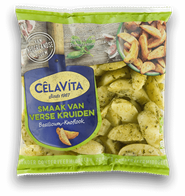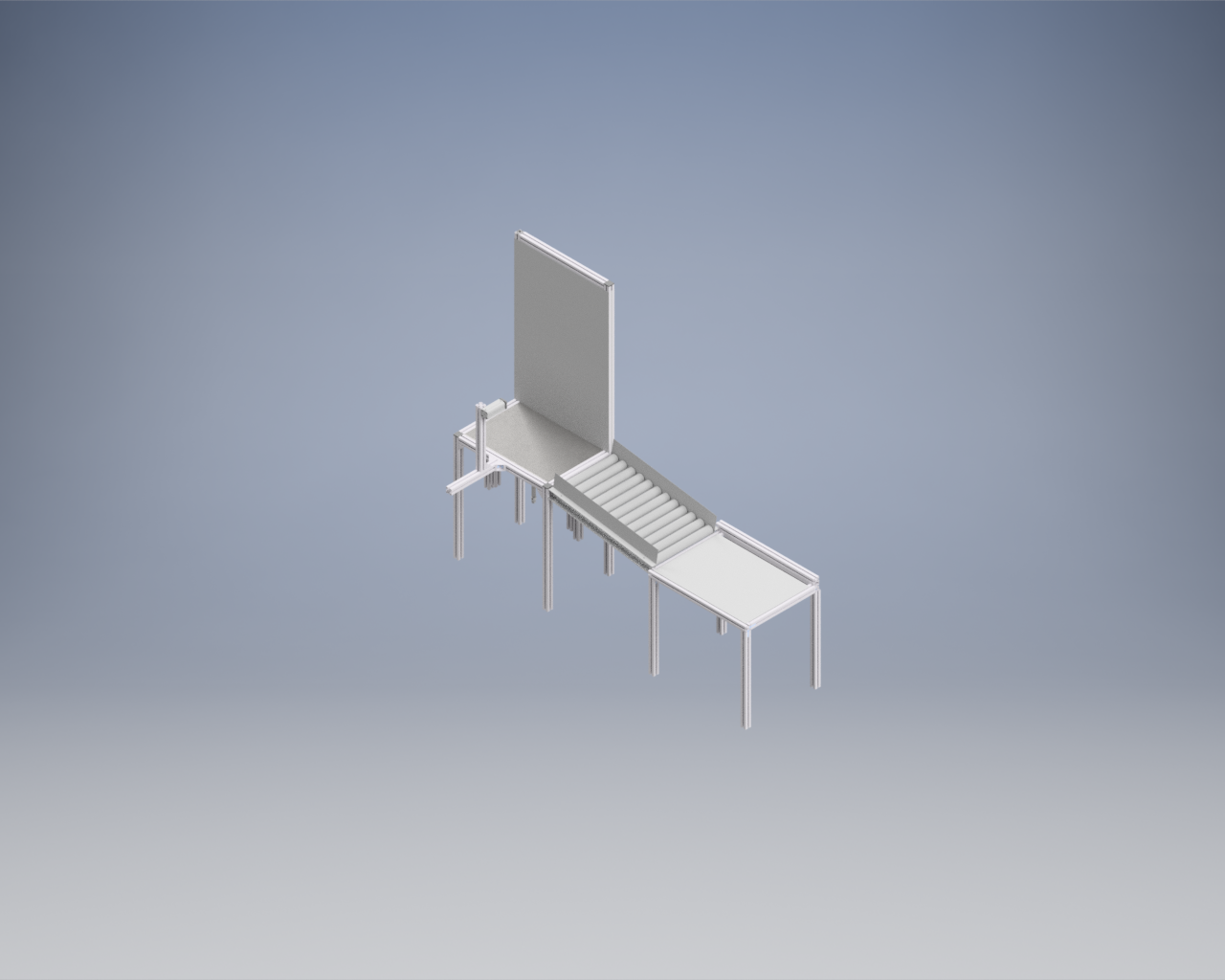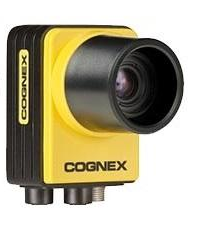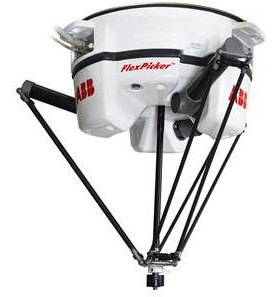Introduction
At the company of Cêlavita McCain they produce fresh packings of potatoes in all kind of different sizes and tastes. They have a factory in Wezep that is divided in two departments; one is focused on producing and packing regular potatoes without any spices added and the other department does add spices and herbs to the potatoes.
The first part of the department where they produce and pack regular potatoes already has some machines in the production line. The reason for this was to get a more automated production process. But despite this, it occurs that some of the machines are very old, expensive and take a lot of space. In figure one is a sample of the spiced potatoes that are produced at Cêlavita.

Figure 1 – spiced potatoes ‘Basilicum knoflook’
Current situation
In the spice-department of the factory there are not many automated machines. However they do want to automate some tasks in the packaging line of the spiced potatoes, because most of the work there is done manually. A good example of the work that is done manually is the packing of the potato-bags in crates and then stack the crates on pallets. Because of this they cannot reach the production speed they wished for. The operator wants to handle the machines and not do manual labor, like packing the crates all the time.
Also there is a quality check for the potato bags that is done by the operator and the temporary workers, because quality and service is most important for Cêlavita. If the quality check is not done properly it can cause major production errors which leads to wasted production time.
Assignment
Reducing the manual labor in the packing process is the main objective for this task so the quality and speed get more improvement. This is a task that can be solved by making an automated process. The goal of this automated process is to reduce as much manual labor as possible within the production line. The quality check, unstacking-and filling the crates are the main tasks that need to be automated. The goals to reach this main objective are performing an automated quality check with a camera and to automatically fill the crates with the potato bags with a robot. Also the empty crates that are stacked on each other can be unstacked automatically.
Requirements
- Potato bags must remain undamaged
- The speed of the process has to be higher than the workload of one worker.
- Little quality control (Sticker: yes/no)
- The robot must be able to handle different kind of crates
- The robot must be able to locate the bags
- The import of the empty crates has to be automatic.
Solution
First, for the stacked crates it is necessary that the crates get unstacked one by one. This can be solved by making a unstacking mechanism (denester) that will unstack the crates one at the time and put them on a conveyor belt. For this task it is also important to know which sensors to use within the denester and the measurements of the crates.

Figure 2 – The denester (unstacker)
For the vision based quality check it is important that the correct data is on it. On each bag there must be a print of the date at the right location, a sticker and a price tag. For this task are there all kind of vision programs like Cognex. Also it is important to have an constant lighting on the products for the best vision. A lightbox especially for the vision camera is a fitting solution. In figure three there is an image of the Cognex camera which is used for the robot vision.

Figure 3 – Cognex vision camera
A robot capable of picking up objects at high speeds is the ABB Flexpicker. Then the robot must make specific movements according to the locations of the potato bags which are located by the vision camera. So the robot must be programmed so it can perform its task precisely. And therefore the robot needs to communicate with the vision camera and with the denester. In figure 4 is an ABB Flexpicker robot which is known for its working speed and object stability.

Figure 4 – ABB FlexPicker
Conclusion
At the end of week 9 the complete system was working according our requirements. When we look back at the overview of the demands we can say that the robot passes all of them.
- The proof of concept is finished at the end of the 9-week period.
- Potato bags do not get damaged during the process.
- The camera is able to perform a quality check for stickers and orientation.
- The robot can perform pickups for different kinds of crates.
- The robot can locate the bags with conveyor tracking.
- The import of the empty crates is going automatically.